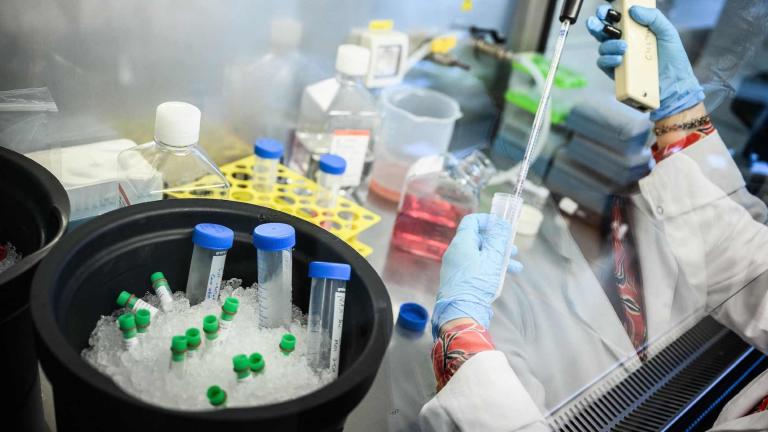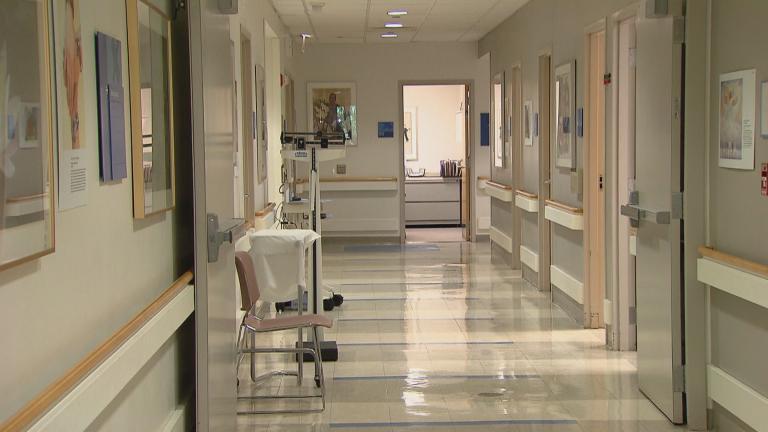 (Angelo Esslinger / Pixabay)
(Angelo Esslinger / Pixabay)
Cancer is a major public health issue. Though fatalities are in decline, it remains the second leading cause of death in the U.S., according to the American Cancer Society. The group estimates more than 1.8 million new cases will emerge this year nationwide.
Cancer treatment can be costly, but new findings from Rush University Medical Center suggest an inexpensive, effective treatment could be within reach. Researchers studying mice were able to slow the growth of tumors or shrink them outright by injecting flu vaccines into them, according to a new, breakthrough study published in the Proceedings of the National Academy of Sciences.
“Since humans and mice are about 95% genetically identical, the hope is that this approach will work in patients,” said senior study author Andrew Zloza, an assistant professor at Rush University.
Even though the flu shot is FDA approved, researchers must still run clinical trials to test the efficacy of using it as a cancer treatment. They hope to begin those trials this year.
But this doesn’t mean your annual flu shot will provide cancer-fighting benefits, Zloza says.
“The majority of regular flu shots are given into the muscle,” he said. “When a flu shot is injected into the muscle, it serves the purpose to protect against influenza but it does nothing against a tumor.”
Flu vaccines must instead be injected into a tumor in order to have an effect, the study found. “Nobody gets skin influenza because influenza can infect cells of the lungs but not skin,” Zloza said. “Injecting (a flu vaccine) into the skin melanoma worked – tumors either slowed their growth or started to shrink.”
Those cancer-fighting benefits were found to extended beyond the individual tumor injected with flu vaccine. “In studies where we gave mice two tumors and only injected one, both tumors had a positive effect – they started to grow slower or shrink,” Zloza said, adding that has implications for how a possible treatment could work in humans. “Some tumors are accessible and others are not accessible, but if we can access any tumor and just inject that one, other ones may also benefit.”
Since new treatments are often compared to or combined with current frontline therapies, researchers also examined how flu vaccines worked in conjunction with checkpoint inhibitor immunotherapy, which can harness the body’s own immune system to fight cancer, though not all tumors respond to it, according to Zloza. They found that combining the treatments resulted in an even greater reduction in tumor growth compared to only using the flu vaccine, even in cases where immunotherapy alone was not effective.
“These results propose that eventually both patients who respond and who do not respond to other immunotherapies might benefit from the injection of influenza vaccines into the tumor, and it may increase the small proportion of patients that are now long-term responders to immunotherapies,” Zloza said.
Researchers posit flu vaccines changed the microenvironment of tumors to increase the immune system’s response to them. “Turning one’s own immune system against cancer using something as available and simple as a flu shot may help certain patients with cancer in the near future, instead of within a decade,” said study co-author Jochen Reiser, a professor in Rush Medical College and chairman of the internal medicine department, in a statement.
Nearly 50 researchers contributed to the paper, including those from Rush University Medical Center, Rutgers Cancer Institute of New Jersey and Harvard-affiliated hospitals and research institutes.
Contact Kristen Thometz: @kristenthometz | (773) 509-5452 | [email protected]








